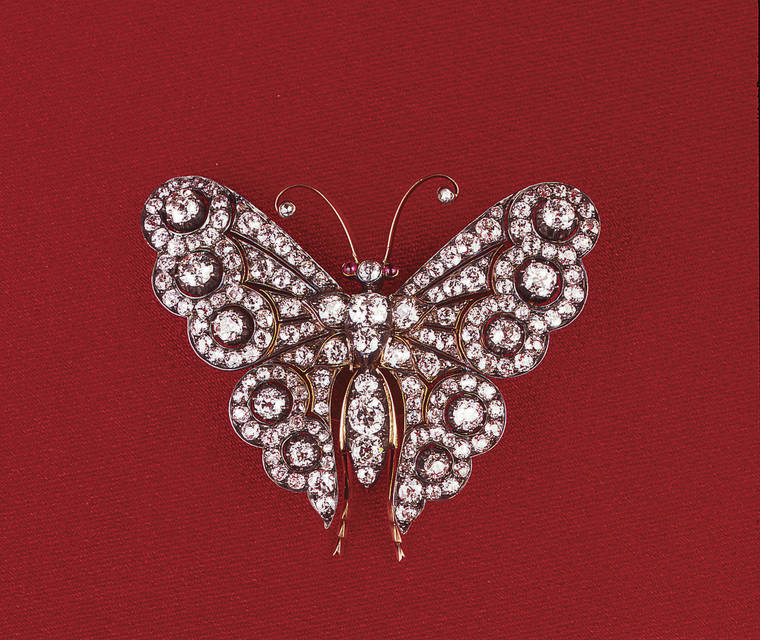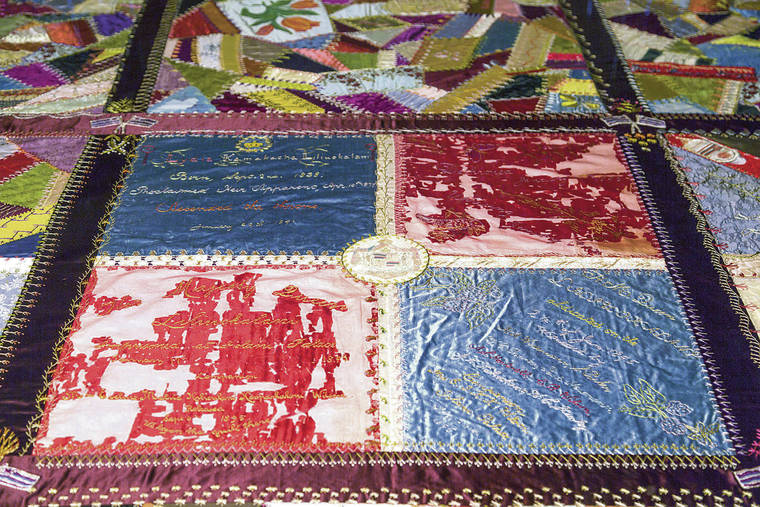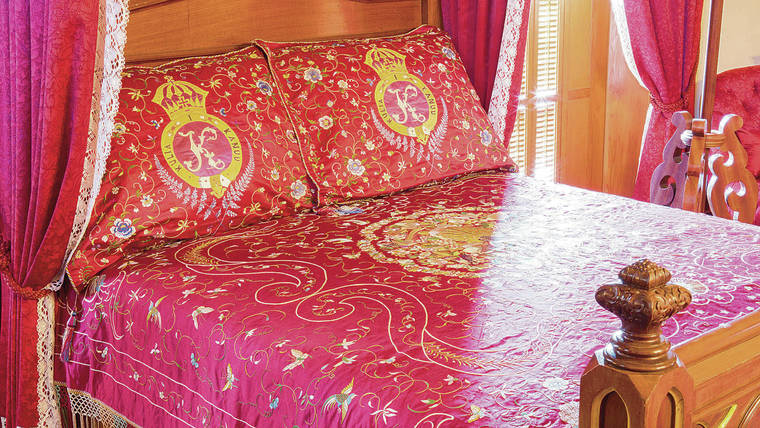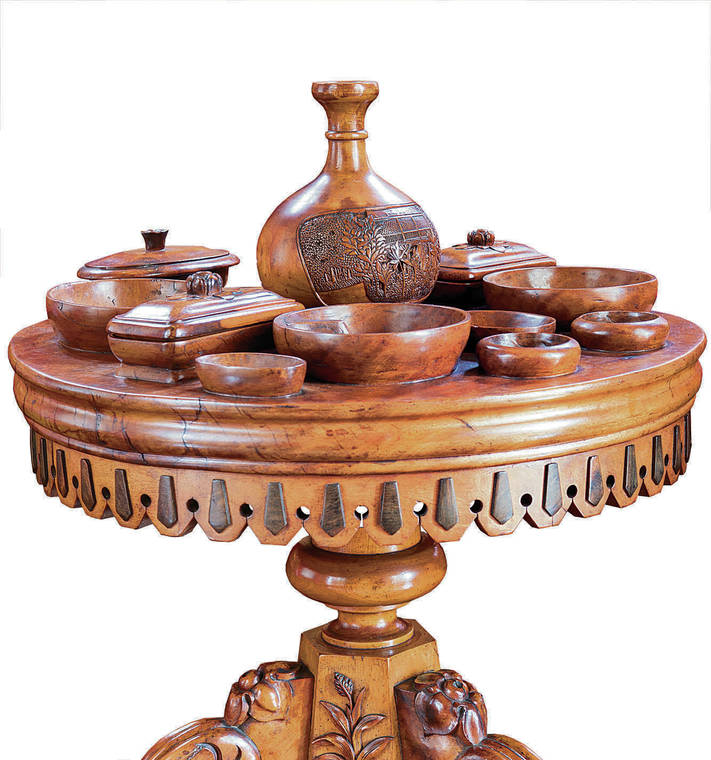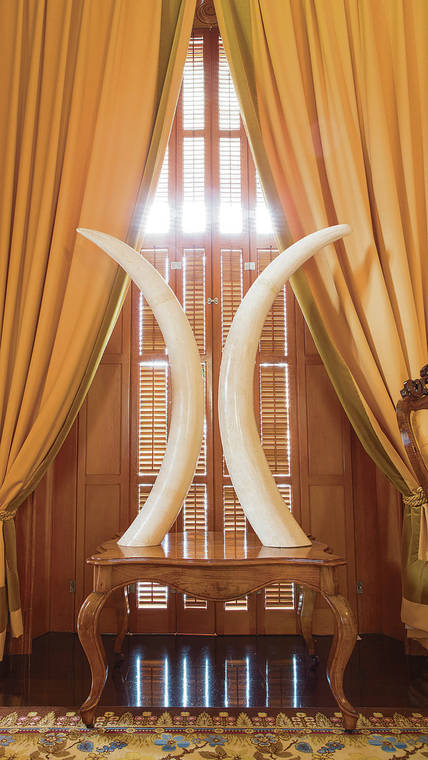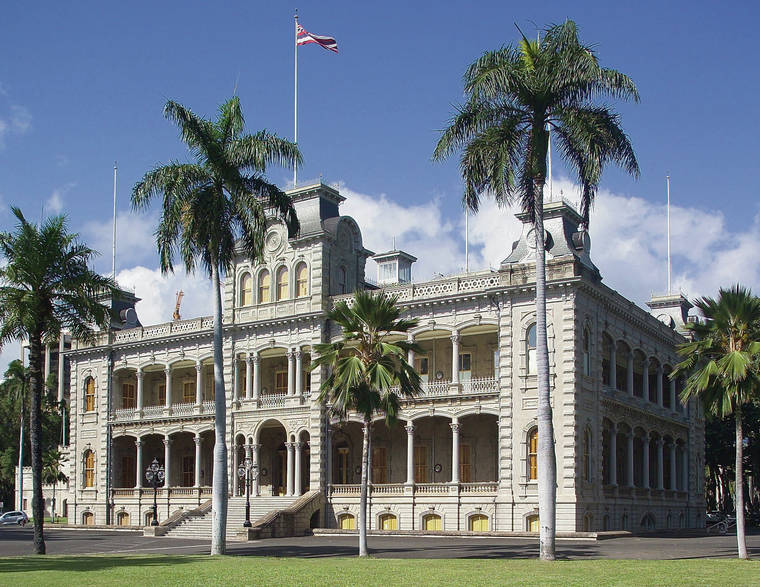As the official residence of King Kalakaua and his sister, Queen Lili‘uokalani, Hawaii’s last reigning monarchs, Iolani Palace holds an important place in the annals of Hawaiian history. Kalakaua directed the three-year construction of the stately building, which he hoped would solidify Hawaii’s status as a modern nation. It was completed in November 1882 with the latest technology of the time, including telephones, electric lights and indoor plumbing.
Following the overthrow of the monarchy in January 1893, the palace was the capitol of the provisional government, republic, territory and state of Hawaii. Government offices moved to the present state Capitol when it opened in 1969, a decade after Hawaii became America’s 50th state.
A $7 million restoration in the 1970s returned Iolani Palace to its monarchy-era grandeur; however, hundreds of items that once filled its rooms and halls — including art, china, clothing and furniture are missing. After the overthrow, things the provisional government couldn’t use were sold at public auction.
“In addition, the alii (royals) gave some of their personal property to family members, friends and loyal staff,” said Zita Cup Choy, the palace’s historian. “Several of their descendants returned items to us. For example, calabashes came from England, porcelain plates from Australia and a table from the governor’s mansion in Iowa, but there is an ongoing effort to find and bring more objects home.”
Here are the stories behind some of the artifacts and furnishings currently on view.
Tusk table
In November 1886, King Kalakaua threw a Golden Jubilee to celebrate his 50th birthday. The festivities went on for more than two weeks.
In the palace’s Gold Room is a koa table that was specially designed for the two elephant tusks that are attached to it. It was a jubilee gift to Kalakaua from the kingdom’s prime minister, Walter Murray Gibson. From the floor to the top of the tusks, the piece measures more than 6-1/2 feet high. Each tusk weighs 51-1/2 pounds.
According to an 1886 story in the Pacific Commercial Advertiser newspaper, the tusks were originally decorated with silver bands, and a silver plaque hung between them. Engraved on one side of the plaque were the words, “The Horns of the Righteous Shall be Exalted.”
Poi supper table
Queen Kapi‘olani commissioned a Chinese craftsman to carve a poi supper table as a jubilee gift for her husband. It showcases at least five different Hawaiian woods, including kou, koa and kamani.
The rotating top and 12 food and condiment containers displayed on it were carved from a single piece of kamani wood. There is a hidden drawer in the table skirt. The table now stands in the Queen’s Bedroom, which refers to both Kapi‘olani and Lili‘uokalani since items that relate to both queens are displayed there.
Butterfly brooch
Then-Princess Lili‘uokalani purchased a glittering diamond-studded butterfly brooch when she was in London to attend Queen Victoria’s Golden Jubilee in June 1887. It became one of her signature jewelry pieces as she is seen wearing it in formal portraits as both princess and queen.
The brooch cost $420 (equivalent to $7,762 today), which Lili‘uokalani paid with her own money. It is exhibited in the Basement Gallery.
Bedspread and pillowcases
The silk pillowcases on the bed in the Queen’s Bedroom belonged to Kapi‘olani. They display an elaborate design with flowers, palapalai fern and her motto: Kulia I Kanuu, which means “Strive for the Summit.”
In September 1891, the United Chinese Society gifted the bedspread on the bed to Lili‘uokalani for her 53rd birthday. Its hand-embroidered motif incorporates flowers, butterflies and multicolored birds, including a peacock in the central medallion. The original set also comprised pillowcases and a table cover, which were not returned to Iolani Palace.
Crazy quilt
In 1895, two years after the monarchy was overthrown, Queen Lili‘uokalani was imprisoned in a second-floor corner room of the palace after an unsuccessful attempt to restore her to power. There she stayed for nearly eight months, with Eveline Wilson, a lady-in-waiting, as her only companion.
During that time, they began working on an 8-by-8-foot crazy quilt, notable for its appliques, painted ribbons and fancy embroidery stitches. The silk, satin, twill and brocade pieces were reputedly fabric leftover from dresses likely made by Wilson’s mother, Harriet Townsend, who was Lili‘uokalani’s seamstress. Sewn throughout the quilt are the names of the queen’s supporters.
After her release, Lili‘uokalani completed the quilt with friends at Washington Place, her nearby home. Visitors can see it in the Imprisonment Room.
—
IF YOU GO: IOLANI PALACE
>> Where: 364 South King St., Honolulu
>> When: 9 a.m. to 4 p.m. daily, except Sunday and certain holidays (see website for details)
>> Cost: Guided and self-guided audio tours are available. Prices for adults begin at $27 and $20, respectively. Kamaaina and military with valid ID pay $23 and $16, respectively. Tickets are $6 for children aged 5 through 12; younger kids are admitted free.
>> Info: 522-0832, email palacetickets@iolanipalace.org or go to iolanipalace.org Opens in a new tab.
>> Notes: Formed by King Kamehameha III in 1836, the Royal Hawaiian Band presents a free concert beside the Coronation Pavilion on the palace grounds most Fridays from noon to 1 p.m. Hawaiian quilt-making classes are offered Saturdays from 9:30 a.m. to noon in the conference room of the adjacent Kanaina Building. Cost is $15 for the first session, $6 thereafter. You can join at any time and start at any level. Call Hawaiian Quilting with Poakalani & Co. at 534-3849 for more information. Five venues can be reserved for private functions. Call 330-4537 or email events@iolanipalace.org for details.
KAMAAINA SUNDAYS
Admission to Iolani Palace is waived for Hawaii residents one Sunday each month. Kamaaina Sundays this year are today, March 8, April 12, May 10, June 14, July 19, Aug. 9, Sept. 6, Oct. 4, Nov. 8 and Dec. 13.
On those days from 9 to 11:30 a.m., Hawaiian cultural practitioner Ku‘uipo Kumukahi discusses Queen Lili‘uokalani’s imprisonment and sings songs the queen wrote during that time. Titled “He Mele Lahui” (Song of the Hawaiian Nation), her presentation is in the actual room where the queen was held.
The free Na Moolelo Lecture Series is also scheduled on Kamaaina Sundays. It features talks by respected community members on a range of topics related to Hawaiian history and culture. Today, Tiffany Lani Ing, Ph.D., author of “Reclaiming Kalakaua: Nineteenth-Century Perspectives on a Hawaiian Sovereign,” will discuss King Kalakaua’s coronation ceremony on Feb. 12, 1883, and the Hawaiian language newspapers and other publications that were published during his reign (1874-1891).
Na Moolelo runs from 3 to 4:30 p.m. in the conference room of the Kanaina Building next to the palace. Seating is limited, and reservations are recommended. To register, go to iolanipalace.org/na-moolelo Opens in a new tab.
Cheryl Chee Tsutsumi is a Honolulu-based freelance writer whose travel features for the Star-Advertiser have won several Society of American Travel Writers awards.
